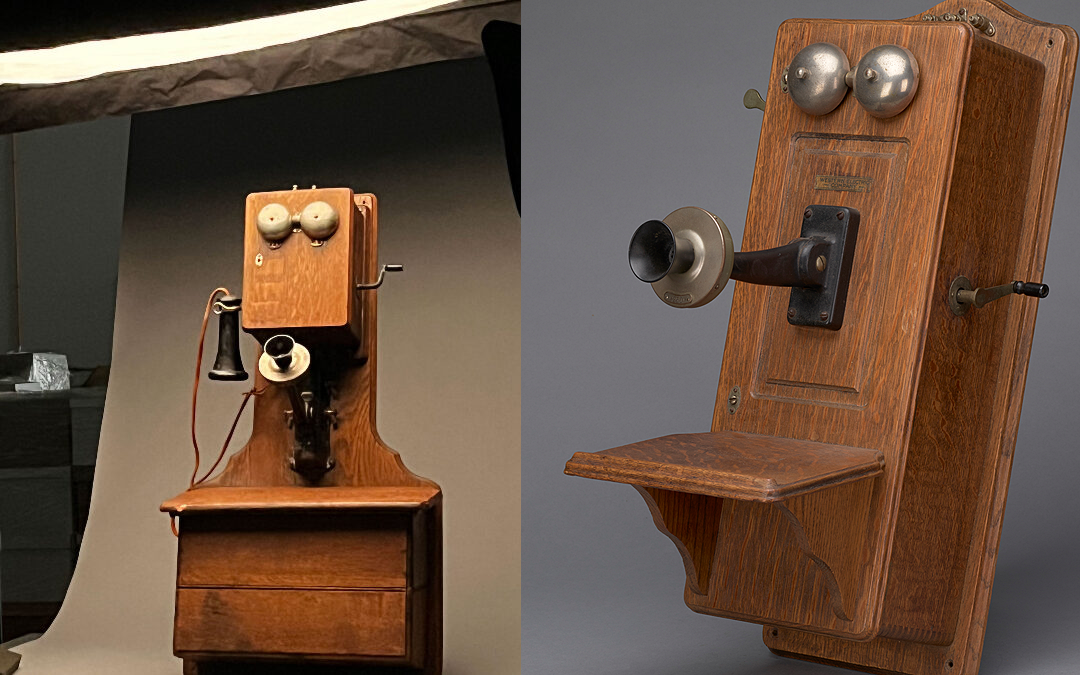A History Factory Collaboration for a
Major Multinational Telecommunications
Company Archival Collection
Corporate Archives serve as living, breathing collections that chronicle the history of a company and can be used for research or marketing purposes, both internal and external. Although people often think of archives as housing mostly paper collections, these collections can often contain transmissive materials, oversized advertisements, and as well as three-dimensional objects, all of which serve to enhance the company’s historical record and provide valuable insight into its narrative.
This past year Digital Transitions, in collaboration with History Factory, conducted a project to photograph and digitize a collection of three-dimensional telephones and related assets from a major multinational telecommunications company Archive. This unique collection consisted of everything from clapperboards and commemoratives to iPhones, rotary phones, and even phone booths! This wide array of objects presented Digital Transitions with a unique photographic challenge in terms of lighting and depth of field – two key elements in producing an authentic and archival digital surrogate.
Digitization Challenges and Solutions
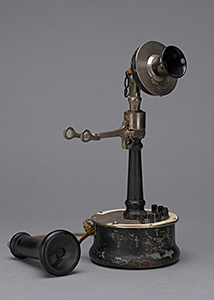
Courtesy of History Factory
One of the main challenges of photographing three-dimensional objects is controlling the lights to illuminate all of the surfaces and crevices of the object in order to ensure that all of the details are captured. When digitizing three-dimensional art, it is essential that the lighting be even and diffused, which is why the Digital Transitions team used strobe lights with large softboxes to allow for a broad dispersal of light over the object. The choice of strobe lighting was intentional: not only is it a common choice in museum and object photography settings, but it also results in burst lighting which emits a large amount of light in one burst and overpowers any ambient lighting that may occur in the digitization environment.
The angle of the light determines how texture and dimensionality are rendered. Along with positioning the three strobes, one positioned above the object and the other two positioned at 45 degree angles on either side of the object, the Digital Transitions team was able to shape the direction of the light using bounce cards, angling it to create preferred gradients and highlight the optimal aspects of the object. The team also adjusted the softness of the lights by either raising or lowering them. Due to the positioning and diffusion principle, the closer the light is to the subject, the larger and softer the light will be which lessens some of the harsher shadows and allows for smoother gradations of tone and color. However, there are also several stylistic choices which are left up to the client and the photographer, as stronger shadows can often provide a sense of weight and dimensionality to a piece, so the use-case for the images is very important in determining the correct approach and lighting.
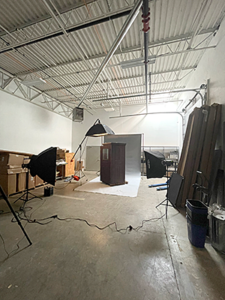
Courtesy of History Factory
In order to minimize potential vibration and create consistency from shot to shot, the Digital Transitions team placed the camera on a tripod. Positioning the camera in this way also helped the team to easily adjust and angle the camera during imaging to create different perspectives of the work. In order to make certain that the objects would stand up vertically and positioned at the desired perspectives, a variety of supports were used, including weight blocks, fishing line, and hand-crafted supports that were built from a variety of materials that were strong enough and small enough to support the objects but that were not able to be seen in the image. In order to capture as much detail as possible, the team used a Phase One XF medium format camera, set with a high aperture to make certain that the entire work was in focus with a larger depth of field to account for varying objects of different sizes and depths. Digital Transitions was also very selective with the aperture choice, as too small of an aperture can lead to diffraction, which is a phenomenon that causes the softening of an image. Through these intentional and purpose-driven choices regarding lighting and depth of field, the team was able to digitally preserve this collection of specialized items and create aesthetic as well as archival digital assets.
Conclusion
Along with containing a variety of objects relating to the legacy of the telecommunications company this collection was both unique and compelling. The fact that this collection was composed of physical telephones and related objects that were either rare or in extraordinary condition meant that its digitization will have great research value both internally and externally. In addition to providing a visual timeline of the evolution of telephones and technology within the company, the objects selected for digitization were also very visually interesting and could be used by the company for further branding and marketing purposes. Conducting the digitization of the collection with advanced photography equipment and expert workflows allowed for the creation of high-quality, preservation-grade digital assets to augment the historical record and facilitate the sharing of the company’s past narrative.
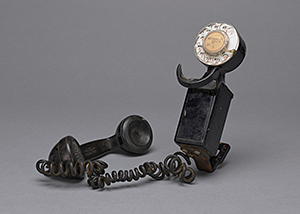
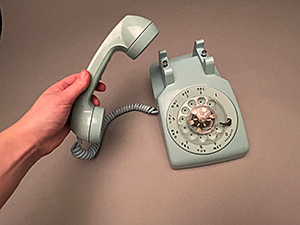
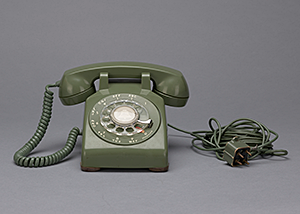
Images Courtesy of History Factory
For more information you can contact us at [email protected]

